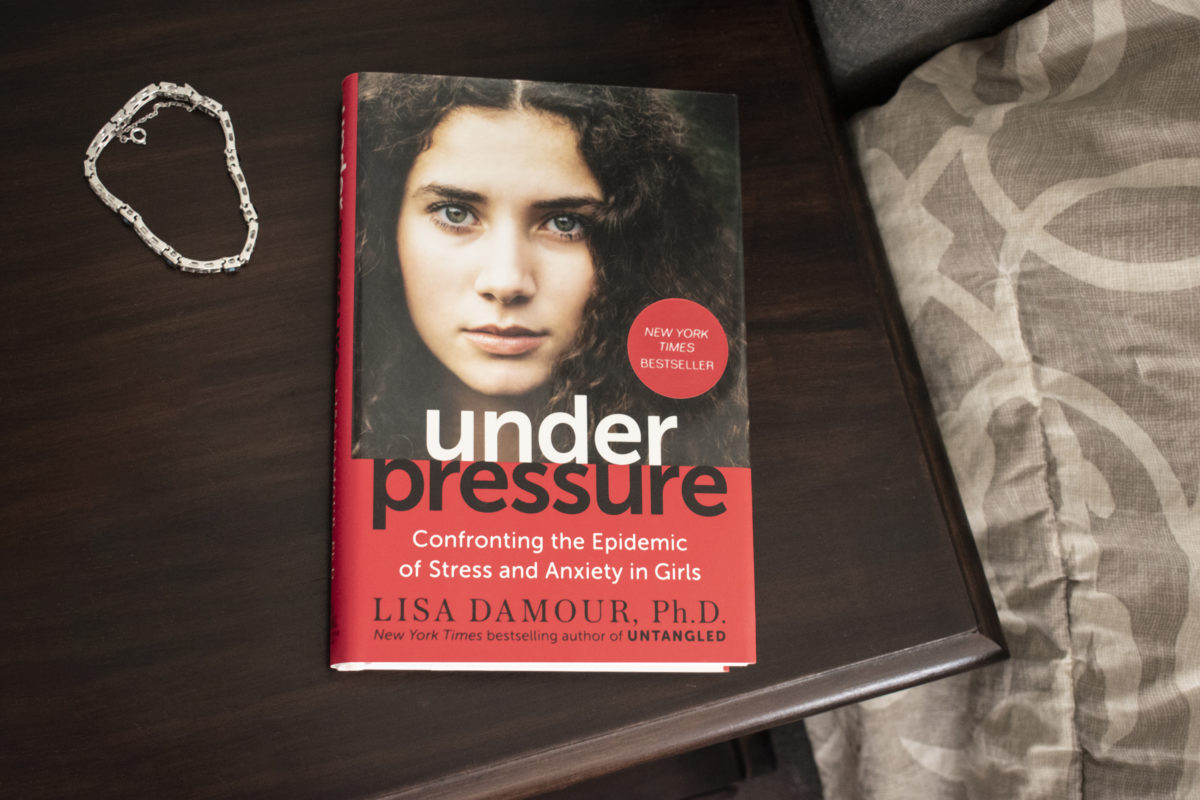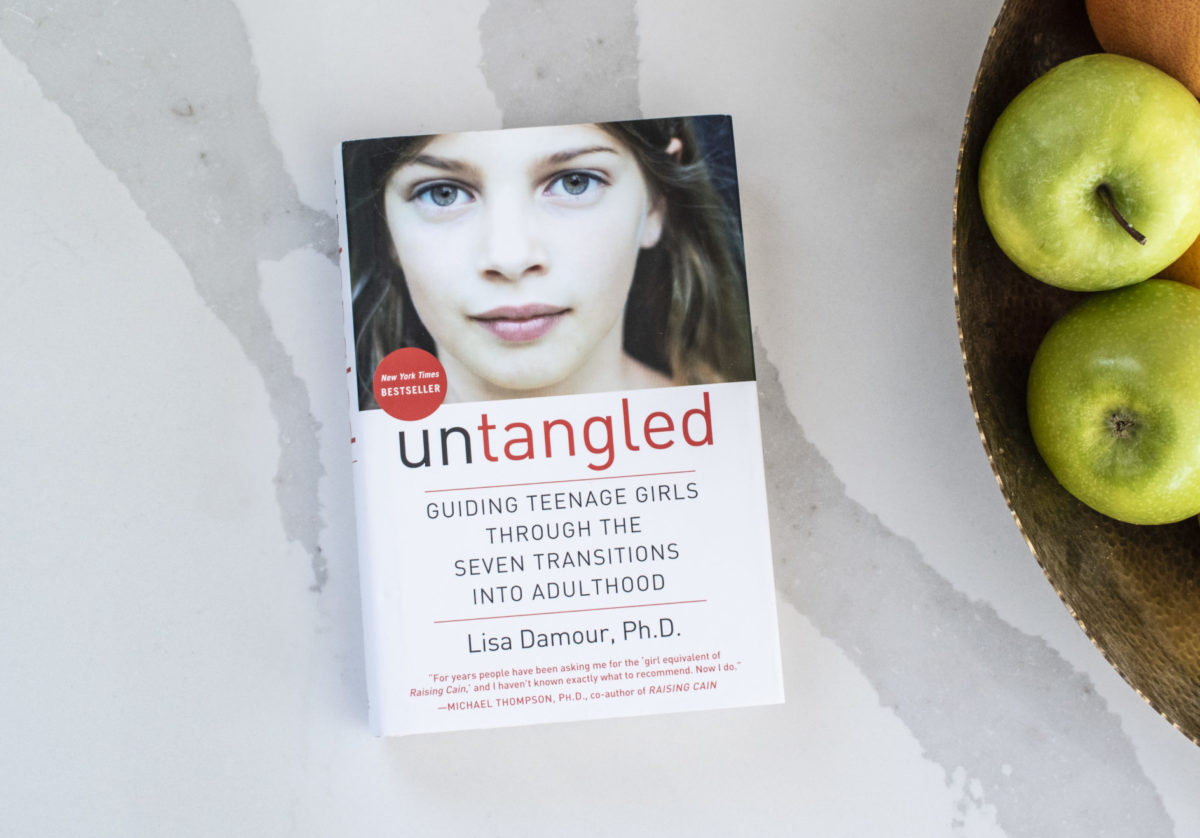What causes a child or teenager to become suicidal? What steps can be taken to prevent suicide? Dr. Jonathan Singer co-author of Suicide in Schools: A Practitioner’s Guide to Multi-level Prevention, Assessment, Intervention, and Postvention joins the Ask Lisa podcast to answer questions from parents. Dr. Lisa and Reena ask about warning signs, whether peers can promote suicidal thoughts, when to be concerned about possible suicidality, and what to do.
May 3, 2022 | 45 min
Transcript | What Do Parents Need to Know about Suicide?
Ask Lisa Podcast, Ep. 79: What Do Parents Need To Know About Suicide?
The Ask Lisa Podcast does not constitute medical advice and is not a substitute for professional
mental health advice, diagnosis or treatment. If you have concerns about your child’s well-being,
consult a physician or mental health professional.
REENA: We want to warn our regular listeners and everyone tuning. We’re going to have a very honest and tough conversation about suicide. We’re joined by an incredible expert. Lisa, I know you were so excited to have him on. Dr. Jonathan B. Singer, who is co-author of “Suicide In Schools.”
LISA: Yes. I am thrilled to have Dr. Singer joining us today. We will have a very direct conversation and I want our listeners to know right away about two resources that you may need right now and you should know about them immediately. There are crisis text lines that you can reach if there’s a concern about suicide. You can find them just by searching online. There’s also the National Suicide Prevention Lifeline, which you can again find by searching online, but the number starting in July will be 9-8-8.
REENA: That’s great. Just a little more about John Dr. Jonathan Singer. He’s written about the news media’s reporting on suicide deaths of Kate Spade and Anthony Bourdain. He’s on several national youth advisory boards, including Sandy Hook Promise, Jed Foundation, Suicide Prevention Resource Center and the National Suicide Prevention Lifeline. He’s also an associate professor of social work at Loyola University Chicago and the founder and the host of the award winning Social Work Podcast. Jonathan, so grateful you could join us.
JONATHAN: It’s an honor and a pleasure to be here. Thanks so much for having me on.
REENA: You know, doing the research, I was surprised to learn that spring is an unusually high time when teen suicides rise.
JONATHAN: Yeah, there’s a long standing myth that people kill themselves over the holidays, and whether it’s adults or adolescents, what’s true is that the highest times are in the spring and then for adolescents there’s also a bump in the fall. The lowest times are during the holidays, school holidays, summer and December.
REENA: So, what causes kids to become suicidal?
JONATHAN: There are a lot of different things that can lead kids down that path, right? You have everything from the interpersonal conflicts that happened between parents and kids, between peers, bullying, cyber bullying. You get kids who are experiencing a sense of, I don’t really belong in this world because of structural issues, racism, economic, inequality, all those sorts of things, and so there are lots of different things. For any one parent and kids, you might have a different path than somebody else in the same city, but they’re all these things that really speak to this idea of, I’m not valued, people don’t care if I live or I die, I don’t see a future for myself. And then something that’s kind of unique for kids compared to adults is that there are some kids who kill themselves sort of out of spite, right? Sort of the “13 Reasons Why” effect, like, ha, I’ll show you, right? And will win if I do this, which doesn’t really happen so much in adult suicides.
LISA: Jonathan, one of the things that I hear, and you hear I’m sure in the community, is that sometimes when a child dies by suicide or teenager dies by suicide families will say, or the discourse in the community will be, it was totally out of the blue, no one saw coming. I think sometimes that’s true. Sometimes that’s said more than it is true. What can you tell us about warning signs, how frequently there are out of the blue suicides, like what do you know about this?
JONATHAN: So, the research suggests that most people who die by suicide, including adolescents, give some sort of warning. The challenge is knowing what is a warning sign, right? There are the ones that are sort of depicted in the media, right? Where you have kind of the angrier sullen kid, or there’s some big thing that happens, an event, but when you talk to a kid and they say something like, I don’t really think anybody’s going to care if I live or I die, right? And then the knee jerk reaction is like what are you talking about? You have so much to live for. So, that could be a warning sign, right? The person’s talking about something that might be suicide, and unless you ask, you don’t know. It could just be a kid being, like, I don’t know, man, I’m going to kill myself if I don’t make an A on this test. And you’re like, oh, yeah, everybody says that. But I’m not listening. I’m not taking it seriously. So, it could be a warning sign. At the same time, some of those statements could just be kids saying KMS, KYS, right? Which they do all the time these days, generically. So, most kids display some sort of warning signs. What we find is that it’s retrospective. When we talk to folks they’re like, oh yeah, that’s right. They did deactivate their social media accounts. They did stop posting. They were saying things like, I can’t really imagine my 18th birthday, right? So there are all these things that in the moment you’re like, well it couldn’t be suicide, but in retrospect you’re like, yeah, I guess that was a warning sign.
REENA: And KYS is something that they say like, kill yourself?
JONATHAN: Yeah. Yeah. KYS, KMS. Kill yourself, kill myself.
REENA: Wow.
LISA: In their sort of texting or social media shorthand this will be a way. And this is such a challenge with teenagers because they can sometimes, they don’t always have a developed language for talking about distress. You know they don’t always say, oh I feel real despair at a level I’m not accustomed to. You know, so they use the shorthand. So while we we’re there on that, Jonathan, if a teenager says that, like, oh, I’m going to kill myself if I don’t get an A on this test, what should a parent say in that moment?
JONATHAN: Yeah, I think the first thing is to acknowledge how stressed out and how intense this is. You know, we know that adolescence can go to 11 pretty quickly, right? Everything’s really intense and so for them they might be like, yes this is the most intense thing ever. As adults, we’re like, this is one of many different tests that you’re going to take in your life. So, you aknowledge it and then you, hey, sometimes when people are really stressed they’ll say things like, I’m going to kill myself, but they don’t actually mean, and sometimes they’re actually thinking about ending their life because it just seems so overwhelming they can’t imagine going on. And I’m just wondering if you’ve had any of those thoughts? So just very gently, very, I’m not making a big deal out of this, I’m just saying, I want to know.
LISA: I love the words and the tone. I love hearing you do both together, like how to say it and what to say.
REENA: So, Jonathan, how do you tell if a kid could be suicidal?
JONATHAN: So, there are what we think of as warning signs, right? We mentioned one of them, which is hearing kids say things like, I’m going to kill myself. That’s a pretty obvious one. Or, I don’t think anybody would care if I lived or I died. Or, people would be better off if I were gone. That sense of like, I’m a burden to others, I’m not part of a group that cares about me. There are other things that if you have a kid who’s saying, I don’t think people care if I live or I die, and their level of intensity and emotions is sustained and it’s high and they find themselves getting angry at people they normally wouldn’t get mad at, right? I mean we know kids, they’ll get mad at people, they’ll yell at their friends, they’ll yell at parents, but like they’re not going to yell at grandma, right? Or they’re not going to talk back to the principal, but if you get a kid that hasn’t been sleeping, deactivates their social media, gets into a fight with the principal or tells a grandparent to f-off and that’s things they normally wouldn’t do, you’re like, oh? And if they’re doing that in the context of saying, I don’t really think anybody’s going to care if I live or I die, in fact, actually, I think people would be better off if I were gone. That’s what we consider a warning sign. That means something is probably going to happen. In the near future, the kid’s probably going to do something to try and end their life.
LISA: Wow. Okay. So, one of the questions that came up as we were thinking about this is to try to understand the link between self harm and suicide. These are distinct and there’s an overlap. So, can you help us tease those apart a little bit.
JONATHAN: Yeah, so that the relationship between what we in the biz call non-suicidal self injury and suicidal thoughts and behavior, specifically suicidal behaviors, is that non -suicidal self injury is, as it’s termed, non-suicidal in the sense that when people are engaging in these intentional destruction of body tissue, right? These acts that are cutting or burning or something like that, that they’re not thinking of ending their life, right? And in fact, many kids, many people, who engage in non suicidal self injury are either feeling so much intensity of emotion that they want the emotion to kind of chill out. So, they went to lessen their suffering, or they’re numb and they want to feel something, which is very different than saying, I’m in overwhelming pain and I want to end it forever. And so the relationship is when you get a lot of kids who engage in non-suicidal self injury, self harm, not because they want to die, but because they’re trying to express something that is hard to express. If you have a kid that has been engaging in cutting or burning or something like that and they start to have thoughts of ending their life while doing those things, then they’re probably starting a transition into the overlap between non-suicidal self injury and self injurious behavior with intention to end their life. And I will just say there are lots of reasons why kids engage NSSI. I worked with a kid who he actually had thoughts of suicide, but he found that when he engaged in NSSI, I won’t talk about how he did it, but when he did that and it was pretty intentional and it was pretty effective, his thoughts of suicide went away for about a month. And so actually engaging in NSSI was a way that he could protect against being suicidal.
REENA: Sorry, what’s NSSI again, Jonathan?
JONATHAN: Sorry, non-suicidal self injury, and I use that because we talk about self harm and self harm can be suicidal or it can be non suicidal and so I just use NSSI to clarify that when I’m talking about somebody who’s engaging in these intentional destruction of body tissue acts without intent, that it’s non-suicidal as opposed to self harm, which could be either.
LISA: So, just to follow up then. As a parent, if you notice that your child has a cut on their wrist, right? That is a deliberate cut, of course it’s terrifying, and I think a lot of parents’ minds would jump to questions of suicide. What would you want a parent to say in that moment to address what they’ve seen, address some of their own concerns about suicidality, but not make the whole thing a whole lot worse?
JONATHAN: Yeah, so one of the one of the things that could be most problematic when addressing non-suicidal self injury is to respond to it as if it was a suicide attempt. When we go to the extreme with the suicide attempt, it usually ends up with some version of hospitalization, emergency department, hospital, but if a kid is not engaging in suicidal behavior, and in fact they’re doing something either to feel something or to manage intense emotions, going that route can can really be seen as punishing. So, one of the things that a parent wants to do is to first of all think about the cut and say, I wonder if my kid is engaging in some sort of problem solving here. There’s something going on and I don’t know what this cut means, and so I’m just going to ask. I’m like, hey, so I saw that you had this cut on your wrist and part of me is really concerned because that looks like it was something that you did on purpose, and I know there are lots of reasons why folks do that, I’m just wondering, why you did that. And if the kid’s like, what do you mean why did that? Then you can say, when you do that, were you thinking about ending your life? And a kid is really engaging in non-suicidal self injury, they’re going to be like, no.
LISA: How could you think that?
JONATHAN: How could you think that? And so they’ll let you know, no I wasn’t suicidal. Like I wasn’t doing this to try and end my life, and you can say, I would love to know what’s going on, and then open up that conversation. And there’s lots of great therapies and writing about self harm for parents and for kids also. So, this is not one of these areas where it hasn’t been addressed, and so you can start that conversation knowing that there’s lots of follow up that can happen.
REENA: You know we asked for questions from parents. Boy, did we get so many in our inbox. One of them was from a parent who’s saying, what should parents do if their teen is having suicidal thoughts or if they say something like, life is not worth living, or I want to sleep forever?
JONATHAN: Well, so let me just say the sleep thing. So, first of all as I know that you’ve talked about on this podcast before, sleep is really important. There’s tons of research to suggest that when kids, particularly teens and young adults, are not getting enough sleep, it increases risk for suicide, controlling for all other sorts of things. And so if a kid says, I want to sleep forever. I would take that as an opportunity to say, it sounds like you’re exhausted, right? How well are you sleeping? Pr if you know they’re not sleeping well, just think about, okay this is a very concrete practical thing that I can do that can actually reduce suicide risk in my kid is to make sure that they’re sleeping more. If you’re a parent and your kid is making this statement, that’s an amazing thing that they’re telling you, right? So you want to acknowledge that and say, I’m really so glad that you’re letting me know. It sounds like you’re in a really, and again this depends on where they are, but it sounds like you’re in a really sad place or sounds like you’re feeling really lonely or you’re feeling so frustrated or you’re feeling overwhelmed. Like whatever the emotional space that they’re in, acknowledge that right? And say, I would love it if you told me more. And just open the space for it. Now, I know that some people are gonna be hearing me and say oh easy for you to say, right? It’s on a podcast, you’re not in the moment, and yes, it can be a really challenging conversation, and so I think for all parents to practice saying, I appreciate you coming to me with this really challenging thing. Tell me more. And just sit quietly, right? Open up the space because what that’s going to do is it’s going to let your kid know, I am willing and able to talk without jumping in and problem solving or dismissing or criticizing. So, then when they come to you with something like, I don’t really think anybody’s going to care if I lived or I died, you’re like, that sounds so lonely and scary. I would love to know more. They’re like, oh yes, Dad actually wants to hear this because he’s demonstrated that before.
LISA: So, Jonathan, what if a parent’s already blown it? You know, the kid says, ah I hate this. I don’t even want to deal with senior year. I’m done. I’m over all of it, I could kill myself. And the parent goes, oh, you know, you’ll be fine, don’t worry. What if a parent listening is thinking, I missed that. What should they do now?
JONATHAN: Yeah, so if you’ve blown it, the great thing about life is that it gives us lots of opportunities to get it right. So, what I would do is I would go to your kid and say, hey, so I realize that yesterday you said something that was really important and in the moment, I dismissed it, and I can only imagine how hard that was for you to come to me with this and then for me to not realize how important it was, and so I just want a do-over. I want to say, hey, and then just do the things that we just talked about, which is honor and acknowledge and validate and label the emotions, and also if the kids like, no you blew it. I’m not talking to you. You can be like, fair enough. Fair enough. I blew it, and this is so important, this is one of these times that I’m going to say that you’ve got to talk to somebody about this. There’s lots of things that you don’t have to talk to adults about, but it’s not okay for me for you to possibly end your life instead of having a conversation.
REENA: Jonathan, do you think this idea of suicide or self harm is something that kids can learn from their peers? Is it something that they copy each other?
JONATHAN: So, there is an experience that is almost unique to adolescence, which is this idea of suicide contagion or what some people called diffusion. Sort of more in terms of the social scripts, like the story of why and how somebody could be suicidal. And the reason why I say it’s almost unique to adolescence is that the age group with the highest suicide rate in the United States overall is actually middle aged white men. Not adolescents.
REENA: What? Really?
JONATHAN: Yes. But if you have a 55-year-old white guy who kills himself, it’s not likely that his peers are then in rapid succession going to kill themselves. It’s about 5 percent of adolescent suicide deaths are classified as as a contagion, right? And so you have a kid who’s 14 who dies by suicide and then they have, within a couple of months, a couple more suicide deaths. This is of course the kind of thing that just completely rocks a community. People are just traumatized. They’re walking on eggshells. They’re like, oh my god, who’s next, right? It’s a horrible thing, but part of the reason when you look at, there’s been social network analysis research, and what they found is that kids who are suicidal are much more likely to be friends with other kids who are suicidal than kids who are not, right? And so what you have is a situation where you get a kid who’s suicidal who dies by suicide, their friends are already at risk for suicide, and so there is a sense of diffusion of, oh well, so and so did it, it’s now an option for me in a way that isn’t true for adults. Now in terms of the script, right, which is sort of what you were talking about, like can they learn it from their peers? In a sense, yes, but it’s also something that communities can contribute to, which is the sense that, oh this one kid died by suicide, now every kid can die by suicide and suddenly it’s something that gets, in a sense, normalized. So, there are two sides to this. One, we want people to be aware and we want people to have the conversations, we want parents to talk to each other, all that sort of stuff. And also it’s not true that all kids kill themselves, right? It’s not true that suicide is something that all kids are even going to think about, and so if you have a script, which is like suicide is the inevitable conclusion for all the kids in this community, it’s actually more likely the kids are going to be like, oh, well this is probably something that’s going to happen to me or my friends, as opposed to, this is something that sometimes some people think about and look, lots of people decide not to and we’re actually going to uplift those stories as well.
REENA: I want to go back really quickly. You were mentioning that’s actually middle aged white men who have the highest rates of suicide. Why do you think that is?
JONATHAN: So, I’ll say that the question of why do people kill themselves is the perennial question, and so some of the things that correlate with adult male suicide risk include things like failed relationships, unemployment, access to firearms, things like that, right? So, if you think about the societal pressures on men to achieve at the expense of relationships, right? And I mean this is my area and I still find myself being like, sorry kids, I can’t do this. I have to go do this professional thing. I have to go give a talk to parents about suicide risk so I can’t make dinner, right? So, I find myself doing things where I am putting my career in front of my relationship to family. So, imagine that you’re doing that and then you get to a point where you’re like, oh I’m kind of stuck in middle management. My kids don’t like me. My relationship is falling apart. Really I have nothing to show for it. That’s kind of one story around adults and suicide, but I think that for this podcast, for folks listening, I think one of the things it’s important we rarely think about with youth suicide is that if you have middle aged men at the highest risk for killing themselves, that means there are dads that are dying by suicide and that increases risk for kids, and so addressing adult suicide is actually protective for youth and addressing youth suicide, building reasons for living, making sure this is a world for people that’s worth living in will reduce the likelihood that they’re going to kill themselves when they’re parents.
LISA: When they themselves are parents.
JONATHAN: When they themselves are parents, yes.
LISA: You know, Jonatha, I’m pulling this from the archives so I could be wrong. I also think the highest rate of binge drinking is middle aged white men and people put this on teenagers all the time and not that all binge drinking is connected to suicide, but I also know that drugs, drinking and firearms and someone who’s had a hard day is a very dangerous combination, and I’m wondering if you could just unpack that a little bit.
JONATHAN: Absolutely. There is a very well documented relationship between substance use and suicide risk, and in adolescence the way that it works is that adolescents who use and abuse substances are significantly more likely to report thoughts of suicide, and adolescents that are under the influence when they make a suicide attempt are much more likely to make a more lethal suicide attempt, to use more lethal means, right? And when I say lethal means I mean fire arms are the most lethal means. Nine out of 10 suicide attempts with a fire arm ends in death, and that significantly different than other methods which have lower death rates associated with them. So, if you are an adolescent under the influence, it’s much more likely that you’re going to use a more lethal means, which increases the likelihood that you’re going to die.
LISA: Okay. Now, this question came up a lot and it comes up in a lot of different ways, and it’s something we talked about on the podcast but I just love hearing your language and your thinking and I learn and grow so much as a clinician hearing how you are doing your work. So, I want to run this by you. ‘What do I do if my daughter tells me a friend is hurting herself or thinking about suicide? Should I tell the parents? How can I support my child?’
JONATHAN: So, I love that this parent’s kid came to her and said this is something that’s going on. It’s overwhelming for adults to hear about their peers or kids who are suicidal to have a kid hear about their peer who’s suicidal, we have to assume it’s at least that overwhelming if not more. So, props to this parent for having the relationship where the kid went to them. What I would then say is I would say, look, I appreciate you telling me. It’s probably something that you are worried your friend is going to be mad that you told me, but you know, it’s much better to have a friend mad at you a little bit for telling somebody than for your friend to be dead. So, that’s a good thing, right? So, thank you for doing that. So, then the parent would say to the kid, has your friend talked specifically about how they’re going to do it? When they’re going to do it? Do you know if they’ve told anybody else, and if the friend’s like, yeah, everybody knows, right? Then that means something very different than, no they’ve only told me. And then, what you can do is you can say, look, this is not something that you need to hold on to by yourself, right? We can partner with this, we can team up with this. I’m wondering what you think would happen if I told her parent, right? Or his parents or their parent? And then have the conversation. So, really partner. As an adult you should always know that letting the parents know is almost always the right idea. If the kid’s like, I don’t know because she’s talked about how her parents have been really mean to her, have been doing these things, right? This is the only caveat when it comes to talking to parents is when there is a suspicion that the parents might be abusive in this case, right? Or do things that would exacerbate the risk, and so you can have a conversation with your kid to try and assess that. You’re not going to know, but then reach out, and this is one of the reasons why it’s really helpful to already have relationships with your kids’ friends’ parents, and I can talk more about that.
LISA: That’s really helpful.
REENA: Yeah. You know I think when we hear about a child who has died by suicide, for so many people on the outside it seems so surprising so often. Like wow, I never would’ve expected that. I’m so shocked. And then it makes you think, well I never would expect my kid to do that and it goes through your mind. For families who have just lost someone by suicide, how can we be best supportive? What do they need in those days, months and years following that?
JONATHAN: Yeah. First of all, I want to thank you for including months and years because when somebody loses a kid, they’ve lost not only sort of those daily interactions but they’ve lost that identity of being this person’s parents as they go through all the developmental milestones, right? They’re not going to go to prom, they’re not going to graduate, all those sorts of things, right? So, there’s an incredible loss there. In the very short term when you hear of somebody who’s lost a child to suicide, some important things not to do are to say things like, how did they do it? Right, the sort of emotional rubbernecking. It doesn’t matter, right? They’re dead. You don’t want to say things like, they’re in a better place, right? Or God needed another angel or something like that. It really, I mean unless you know that person’s faith tradition says that is helpful, but otherwise, don’t do that because it really dismisses the pain that they’re going through in the moment, and then doing things that you would think about doing when somebody has any sort of loss, right? Whether that’s like prepping meals, offering to do laundry, whatever it is that you can do, and then check in with them and know that you can send texts and emails and the beautiful thing about asynchronous communication is that if the person’s not ready, they don’t have to read it, right? They can read it when they’re ready. I would also, if they have other siblings, check in with them about, our kids play together, do you want them to come over, right and hang out, would that be helpful, like you can call me at any time. Just all of those sorts of management things could be really, really helpful. Many communities have survivors of suicide loss groups. Sometimes they are organized through a faith communities but are not necessarily faith focused and then there are the survivors of suicide loss groups that are just kind of national. Now, for most people who attend those groups, there’s a waiting period. Three months, six months, between the time where there’s the death and then when they’re kind of ready to go. But those can be incredibly powerful and uplifting communities because they’re in a group of people that just know what happened. They don’t have to explain it.
REENA: Is there a point in dealing with the aftermath of a suicide that you feel hits the family the hardest that people might not know. I guess what I’m asking is, what do we not know that you would like people to know for the families that are dealing with this?
JONATHAN: I think one of the most profound things is that there’s no good answer, and so families are just left with a perpetual sense of why. And for parents it’s like, what did I do wrong?
REENA: Yeah, I think that’s what I think stabs me in the heart the most is for the parents, it’s the what did I do wrong question. I think that’s what I would struggle with most.
JONATHAN: Yeah, and what’s true is that most parents do the best they can with the information they have. You know and so I’m grateful you all are doing this episode today because just knowing that you can ask about suicide, right? You can follow up on those questions. There are things that you can do, right? These are all things that can help parents to know, and what’s true is that there are some kids that die by suicide and the message that we put out there to the general public, which is suicide is a preventable public health problem, that message actually switches after death, right? Because that message can sound blaming. Like, oh, it was preventable? So like I didn’t? Or you didn’t? Or somebody didn’t? And so then the really the message becomes, how can we help you? How can we support you as a suicide loss survivor? And you know this is not comforting, but there are about five and a half to six million people in the United States every year who are newly bereaved by suicide death.
REENA: Do you think suicide rates are going up? Or are we just talking about it more?
JONATHAN: Yeah, so suicide rates are going up. If we look at the past twenty years or so, for youth, starting in 2007, there was a pretty steady increase from about seven per 100,00 to about 10 per 100,00. The most recent stats we have were from 2020 and it was about t10.5 for 100,000. What that means is that if you have 100,000 kids who are ages 10 to 24, about 10 would die by suicide, right? Do that’s what that means. I think it’s important in those numbers to note that the greatest increases have not been in white youth. So, they have been amongst American Indian and Alaskan native youth, Black youth, and Latine youth. Especially in 2020 that’s what we saw. We actually saw no increase amongst white youth and we saw a pretty significant rise in those three other racial and ethnic groups.
LISA: Generally, my understanding is we’re a little bit caught off guard and don’t have the kind of data we need to understand why. I think there’s been efforts at the congressional level to try to catch up on this, but I feel like this is such a prime example of structural features where when we’re studying why kids die by suicide, we’ve started mostly about in big groups or why white kids are dying by suicide and have not necessarily drilled down on data as it pertains to specific racial and ethnic groups until now.
JONATHAN: Yeah that’s absolutely true. So there is the ring the alarm studies from the congressional Black Caucus that came out last year. Michael Lindsey is the incoming dean at the New York University School of Social Work. He did a lot of work pulling together this information, particularly around Black youth. In terms of data collection, and I know this sounds a little bit wonky, but it’s really important. You have politicians all the time during the COVID-19 pandemic say, more kids are killing themselves than are dying by COVID, but we actually had no data. All of that was just made up. They saw a tweet, then they repeated it. I’m talking about 2020 suicide death data. If you ask me about suicide attempts and ideation I would actually have to go back to 2019 because that’s the last time that we had nationally representative data. We’re not going to get the 2021 data until 2022, right? So, all of the conversations nationally about like, well how did the pandemic affect suicide? It’s a little bit of a guessing game in part because we’re still in the middle of it, but all we have is 2020 data for suicide deaths, and so my recommendation is that not only should schools collect data about what’s going on in their schools because really, the suicide ideation attempt and death data is going to be different than another school. You have parents who are like, oh we want to make sure that we’re on top of this. What can we do at our school? Like there’s so many things that can be done locally in terms of gathering data that we don’t have to wait on the federal government to fix this massive data backlog. I mean it’s ridiculous that I could figure out how many positive COVID cases there were in Louisiana yesterday, but I had to wait two years to figure out how many kids died by suicide.
LISA: Jonatha, let me wrap us up here. This has been so useful and we’re so grateful for your time and expertise. So, here’s my question. Obviously, if your kid or teenager brings up suicide, you’re going to take all your good advice and follow that question and see what is really behind it. Is there a point where parents if their child doesn’t bring it up and there doesn’t seem to be anything weighing in particular on your child, should parents bring up this topic at home? And if they should, at what age? Under what conditions? What do you think?
JONATHAN: Yeah, so I think this is a conversation that especially during the teenage years is something that’s a reasonable thing to bring up and you can do it as a way of talking with your kids about their friend group right. Sort of as a check in, right? Say, you know, I know that this this idea or the the topic of suicide has been, it’s been in entertainment, it’s been in news, people talk about it. I know that your school sent something that they were doing a presentation on it, and I wanna let you know that first of all, I’m okay talking about it, and second of all, I’m just wondering what you and your friends think about this? Just open that up. And then if the conversation’s going well, you can say, I’m wondering like how do your friends let each other know that they’re not doing well when they’re online, right? Like what images do they use, what sort of things do they say, right? How do you know when your friends are distressed, when they’re upset? And then you can be like, and so like what do you? So, you’re slowly kind of getting into that, and then what you’re doing is you’re learning how they communicate when they’re upset, particularly online, but more importantly they’re just letting you know, and that’s something that you can’t fall back on later on when things are happening where they haven’t been sleeping well, when they got angry at grandma, when they said, I’m done, I’m longer on TikTok, and you’re like, oh wait a minute. Huh, like not sleeping, irritable or aggressive like out of context, disconnecting socially. I’m going to check in, but you’ve already set the stage, right? You’ve planted the seeds. So, that’s good.
LISA: So, helpful.
REENA: I learned so much from this podcast, and I think it’s just a topic that people are scared to talk about.
JONATHAN: Yes. People are scared to talk about it, and let me just leave you with this. So, one death by suicide is one too many, and most kids who attempt suicide report having satisfying or very satisfying lives, moving forward, this is based on longitudinal studies. We also know that the vast majority of of people, about 90 percent of people who’ve attempted suicide, don’t ever die by suicide. And what I mean is they attempt and then they go on and they live their lives and then they die by natural causes, whatever, but it’s not by suicide and so families can go through a suicidal crisis with their kid and on average, your kid is going to be fine. It’s just terrifying in the moment because you don’t know.
LISA: Thank you for sharing that. That’s a really important thing for people to hear. Jonatha, thank you so much.
JONATHAN: You’re so welcome. It’s been an honor and a pleasure to be on.
REENA: It was really wonderful to hear what you had to say, and informing us Dr. Jonathan B. Singer, co-author of “Suicide in Schools: and host of the award-winning “Social Work Podcast”. Thanks so much, Dr. Jonathan.
JONATHAN: Thank you.
REENA: So, Lisa, what do you have for us for parenting to go?
LISA: So, as we were talking with Dr. singer I started thinking about one of my favorite studies, I guess I would say, about talking with kids about suicide. Becaause parents can really worry that if they bring up suicide or ask about it that they’re going to make things worse, and there’s a fantastic study, and we’ll put the reference in the show notes, that found that when students, a whole school of students was asked about suicide ideation and thoughts about it. What they found was the students who were not suicidal at all were not made any more distressed by the question. Asking the question did not make it worse. But the students who were thinking about suicide felt better having been asked. So, I just want parents to know that if you’re concerned, ask. You won’t make things worse and you might make them better.
REENA: That’s really great.
LISA: Thank you again for listening, and again a reminder, if you have any reason to be concerned at all, do not hesitate to reach out to the suicide crisis text line or the national suicide prevention lifeline, and the number for both can be found through an online search, and starting in July 2022, the number for the national suicide prevention lifeline will be 9-8-8.
REENA: Great resources. Thank you, Lisa. And just remember next week, we are going to be talking about how to give your kids independence. Shen should you take the training wheels off? I’ll see next week, Lisa.
LISA: See you next week.
More resources

















